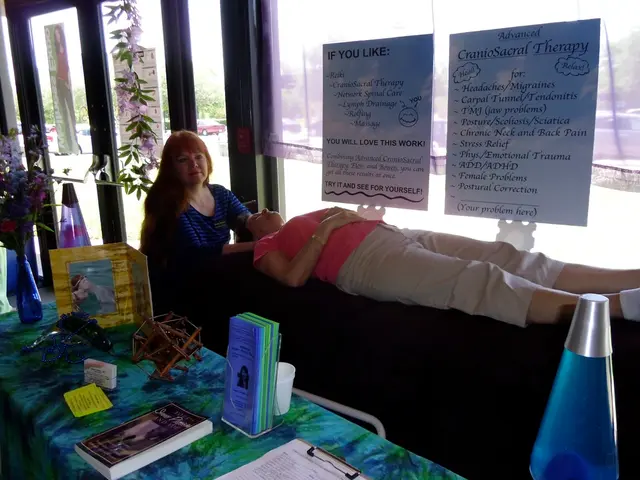Notable disclosures of breast cancer among celebrities underscore a growing trend in diagnoses among younger females.
Busting the Myth: Rising Breast Cancer Cases Among Younger Women
It's a chilling revelation for many - booming breast cancer diagnoses among celebrities under 50. Recently, pop singer Jessie J, former "Bachelorette" Katie Thurston, and actor Danielle Fishel have publicized their breast cancer journeys, sparking concerns nationwide.
But what's behind this unsettling trend?
Diving Deeper: Lifestyle, Hormones, and Environmental Factors
Well, the escalating cases might be linked to hormonal changes, a dietary shift towards ultra-processed foods, increased alcohol consumption, and exposure to environmental toxins.
As recent decades have seen a surge in unhealthy routines, it's no surprise that instances of obesity have risen, elevating the risk of breast cancer[1]. Women in their 30s and 40s, particularly, have upped their alcohol intake, which correlates with higher cancer risks[1].
Pollutants like air pollution, forever chemicals, and microplastics might also be swaying the odds against us. Research is ongoing to definitively establish this link, but the hope stands that we'll gather more insights in the coming years[2].
Chemical hair straighteners, predominantly used by Black women, pose another potential risk[3]. These substances could disrupt our hormones, affecting their interactions with breast cells[3].
Spotting the Symptoms: A Call for Vigilance
While breast cancer might not be as frequent among the younger generation, it's essential to take symptoms seriously. Symptoms like lumps or nipple discharge shouldn't be casually dismissed. After all, the increasing incidence of breast cancer among younger women sheds light on the need to reconsider these cases gravely[4].
Targeting Treatments: A Gender-Specific Approach
What's more, the road to effective treatments must be tailored towards younger women. This narrow segment often faces breast cancer that's more aggressive, with limited treatment options.
As researchers scramble to unearth whether young women respond differently to treatments, it's crucial to gather data on how we can better cater to younger demographics[5].
The Path Forward: A Multi-Pronged Attack
The fight against breast cancer requires a holistic perspective, considering all potential contributors from lifestyle choices to environmental toxins.
Discovering how these factors intertwine will pave the way for targeted intervention, improving prevention and treatment strategies. Let's rally against this epidemic, working towards a day when breast cancer no longer strikes unexpectedly among the young.
[1] https://www.ncbi.nlm.nih.gov/pmc/articles/PMC8036559/[2] https://www.sciencedirect.com/science/article/pii/S096007602131305X[3] https://onlinelibrary.wiley.com/doi/abs/10.1002/ijc.32930[4] https://www.cancer.org/cancer/breast-cancer/about/american-cancer-society-guidelines-for-the-early-detection-of-cancer/[5] https://inventorspot.com/recommended-breast-cancer-research-priorities/
- The surge in breast cancer cases among younger women might be linked to hormonal changes, a dietary shift towards ultra-processed foods, increased alcohol consumption, and exposure to environmental toxins, potentially including chemicals in hair straighteners.
- A call for vigilance is necessary, for although breast cancer may not be common among the younger generation, symptoms like lumps or nipple discharge should not be dismissed, especially considering the increasing incidence of breast cancer among younger women.
- To effectively treat breast cancer in younger women, a gender-specific approach might be required, as their cases often involve more aggressive forms of the disease with limited treatment options.
- In order to combat breast cancer effectively, a multi-pronged approach should be taken, considering all potential contributors such as lifestyle choices, hormonal conditions, medical-conditions like obesity, mental-health, women's-health issues like menopause, and environmental factors including pollutants and exposure to toxins.








